Swimming newborns – When and how to start classes with baby in water?
When and how to start swimming newborns? Effective recommendations for teaching baby swimming. Video footage and description of phased teaching of newborns swimming
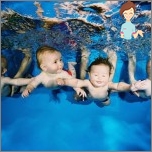
Stay on the water – this is a useful skill for every person. Therefore, many modern parents seek to teach the baby to swim in the first months of life. In this regard, they have many questions «Is it harmful for a child? From what age is better to start a child to swim? Where better to do it» and T.NS. It is for them that we will try to answer you today.
See also: How to choose a children’s pool for a child.
Benefits of newborns swimming
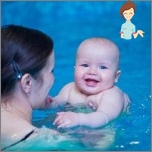
Favoring newborns is not just a kid training to stay on the water. This process is even a learning to call it difficult, since it is incorrectly to apply this word to children.
Early swimming is One of the ways to develop a child, aimed at purchasing certain skills, but on the expansion of the kid comfort zone, So that he felt free and confident in any element.
Videos: baby swimming in a home bath
On the question «Useful swimming newborns or not?» There are different answers. The older generation says that it is impossible to do this. «Pools are dirty, because of what atypical dermatitis will be exacerbated. And in general – you don’t have a small child to dip in the pool and make the breath for a long time.»
But still Many pediatricians believe that swimming for infants is very useful:
-
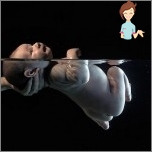
It contributes to the correct physical development of the child. Children with whom they were engaged in breaststorm, are 2 times less suffering from colds. Such kids begin to crawl and walk before. Many specialists argue that a swimming time with kids up to 6 months contributes to the strengthening of immunity, getting rid of muscle hypotonus, hypertonus, manifestations of Rakhita, anemia.
- Regular swimming of newborns Promotes the development of a mechanism for maintaining a constant body temperature. Thanks to this, the child will not be as susceptible to the sharp change of the external environment, and therefore will be less likely to hurt.
- Swimming promotes raising hemoglobin levels, Since during classes in the water, the child has a little difficult, breathing and the body lacks oxygen, there is an additional emission of red blood cells in blood.
- Swimming Strengthens the lungs and heart.
- Swimming promotes the correct formation of posture. Since all groups of muscles work in water, and the joints and spine «Unloaded». Regular waters contribute to the formation of a strong muscular corset for arches and spine.
- Child learns not to be afraid of water.
- Swimming with parents strengthens emotional communication, Conducts close trusting relationships, which creates a favorable psychological atmosphere.
Video Instructions for Young Parents: Favoring Newborn
Swimming newborns – When and how to start classes?
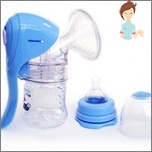
Start teaching swimming kids can from 3 weeks. By this time, the umbilical wound healed completely, and the child has already mastered the environment with the environment.
Best acquaintance with big water space start In a regular bath. Classes can be carried out independently, but, and if you are afraid, you invite a specialist home. Remember, during class you should feel confident, otherwise your fear can pass the child. Because of this, he will behave in water any restlessly, or even frighten and start to be afraid of water.
In the pool, it is recommended to start classes only from 2 months of age, When the child has already acquired certain swimming skills in the water.
Water temperature and training time for breast training
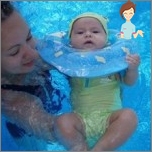
For the first water procedures of the newborn The water temperature should be not lower than 34-36 degrees with. Loan gradually temperatures can be reduced. However, children under 3 months are not recommended to engage in water in water, the temperature of which is below 32 degrees with.
During classes, the child should feel comfortable. Water should not be too warm, because then the kid will not have a desire to move. Therefore, for each child, the ideal temperature of the water is selected individually, depending on its behavior:
- If during dive The kid begins to cry And it does not calm down for 3 minutes in water, then the water is most likely cold for him;
- If during the dive child begins to cry, but then quickly calms down and begins to actively move with legs and handles, which means the water temperature is optimal;
- If in the water The child behaves relaxed and passively, So water is too warm.
For kids up to 4 months, the duration of occupations in water should not exceed 15 minutes, Then the time of staying in water can Increase daily for 10-15 seconds.
The main exercises of the navigation of newborns; Photo
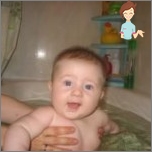
Start every lesson of swimming With vertical dive into water. Sit down several times and lower the baby into the water. MUST During classes, it is necessary to talk to the crumb, as well as maintain visual contact. After the crumb will get used to the water, it can be translated into a horizontal position.
The main exercises of navigation of newborns:
- «Plush-pluis»
The kid lies in a cloth on the tummy, parents support the head for the chin. The whole body of the child, besides the head, is completely immersed in water. Mom or dad show the child, how interesting and fun to splash, how beautiful circles are spreading on the water.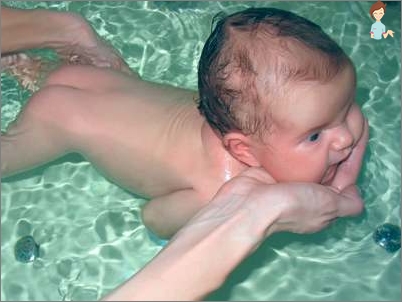
- «Let’s floate for duckling»
The child is in a horizontal position on his stomach, hand keep your head for chin. Put a floating toy in front of the child and try to catch it up. At the same time, the game must be accompanied by verbal teams, for example: «Rather, catch up with our duckling, look, our boat floats». Distance and speed of swims constantly increase. - «Eight»
After the baby learned to swim in a straight line, you can proceed to eight. Lying on the back or on the tummy to drive a child in water as if you draw the eight of his body. The speed of the exercise is selected individually, depending on the behavior of the child. Someone loves slowly, and someone loves to quickly.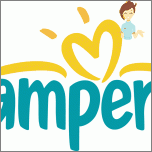
- «We work legs»
This exercise can be performed as lying on the tummy, and lying on the back. Most often children with pleasure perform this exercise. It is useful not only for swimming, but also for walking. Swim to the side of the bath (pool) and get into it semi-bent legs. Baby will reflexively push off the side of the feet with legs. Parents should give this moment and give the team «pushed out» from the side and swam.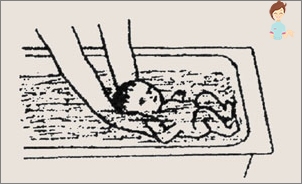
- «Swing»
To perform this exercise, immerse the child into the water, keep your head for chin. In this position we perform smooth shaking. While moving forward, the baby’s breast should appear on half to appear from the water, back – come back to its original position.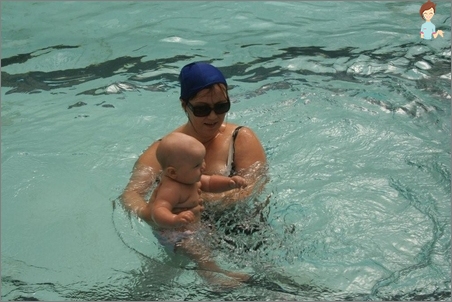
Swimming for Breasts: Diving
An integral part of learning baby swimming is diving. Correctly tracing it with this exercise, you will be calm when the kid plays in the water.
Dive need to learn gradually, in several stages:
- After the team «Once, two, three – dive» blow to the child on the face. At this point he will close his eyes, shrink and delay her breathing. This exercise must be repeated for 10 days.
- The kid lies on the tummy, the head is supporting hand. After the words «Once, two, three – dive» splashing water in the face of the child. Try not to do this from the bottom up so that the water does not fall into the nose. After mastering this exercise, you can go to the next stage.
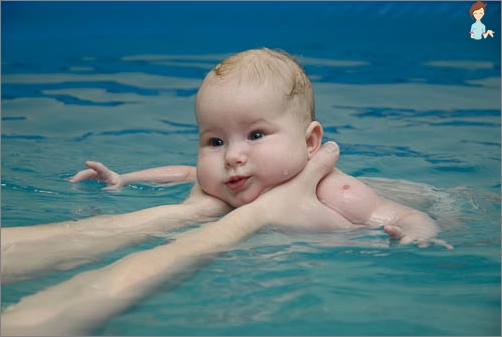
- The first squirrel to fulfill better when the child is in a good location of the Spirit and I saved a little. To do this, the child must be in the stomach position. After you have pronounced a familiar team, lowered a child with shallow water water for a few seconds and remove on the surface. Be sure to praise the crumb. At the beginning, the diving can be performed no more than 3 times for the lesson. After the development of short diving, you can go to a longer.
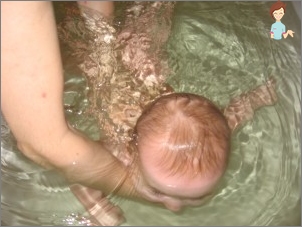
After the child mastered swimming in the bath and he was half a year, you can safely Switch to classes in the pool. There are classes should be held Together with experts, which are always ready to help you.


